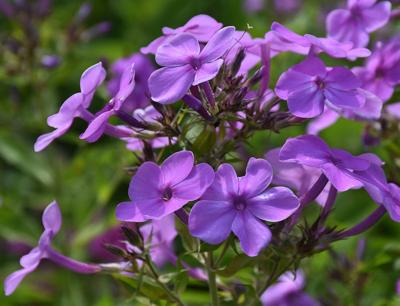Oh, the beauty of summer, relaxing in a reclining lawn chair next to your prolific perennial flower garden bursting with color, without a care in the world.
Wait. Why does this sound so far-fetched?
What we tend to forget when we dream of summer gardening is the amount of time, sweat and effort we spend caring for our gardens.
If you want your dream of a lower-maintenance summer flower garden to become a reality, spring is the perfect time to take a moment for some self-reflection and to plan ahead, including how much time you want to spend working in your garden. You’ll also need to consider your budget.
The best way to start is to create a simple diagram of your property and include your garden spaces. It doesn’t have to be accurate. Using simple shapes to represent each space works great.
Then take a step back, and think about these gardens strategically. Which gardens do you feel the most passionate about, and which do you feel more neutral about? Which do you see each day from your back deck or when you come home, and which do you rarely see?
Color-code your diagram, using three different colors to represent high-priority, medium-priority and low-priority spaces. Depending on your budget and time, you might consider transitioning low-priority gardens back into a naturalized landscape or meadows appropriate for your property.
High-priority gardens should get the most of your attention. Put your labor, mulch and other resources toward these gardens first.
Mid-priority gardens can fall somewhere in between, depending on your time and resources. Consider dividing and moving healthy plants from other areas on your property or adding new plant material to make these areas more appealing.
Weeding can be one of the most time-consuming garden maintenance tasks in summer. Applying a 2- to 3-inch layer of mulch each spring, when plants are coming out of their winter dormant state, will significantly cut down on the time you spend weeding. It also will add organic matter to your soil and help retain moisture, thus reducing time spent watering.
To calculate how much mulch you will need, measure the area (length by width) of your flower gardens to get the total square footage. Many home and garden supply stores have mulch calculators that will translate the area of your beds and thickness of desired mulch layer into either bags or yards.
Several types of mulch are available. To determine the best type for your gardens and budget, visit bit.ly/unh-garden-mulches.
A clever landscaper trick to apply mulch is to take an empty plant container and put it upside down over the plant. Use a size a little larger than the plant you are protecting, taking care not to damage the emerging foliage. Then, pour on the mulch.
After mulching, remove the container. Smooth the mulch around the plant, making sure the emerging tender leaves or crown are not covered.
Spread mulch evenly across the garden bed, keeping it 2 to 3 inches away from the base of each plant to discourage disease.
Throughout the garden season, take notes on the challenges you face or changes you’d like to see in your garden. Use these notes next spring to help plan where you will focus your efforts that season.
Bonnie Kirn Donahue is a UVM Extension Master Gardener and landscape designer from central Vermont.

















(0) comments
Welcome to the discussion.
Log In
Keep it clean. Please avoid obscene, vulgar, lewd, racist or sexual language.
PLEASE TURN OFF YOUR CAPS LOCK.
Don't threaten. Threats of harming another person will not be tolerated.
Be truthful. Don't knowingly lie about anyone or anything.
Be nice. No racism, sexism or any sort of -ism that is degrading to another person.
Be proactive. Use the "Report" link on each comment to let us know of abusive posts.
Share with us. We'd love to hear eyewitness accounts, the history behind an article.